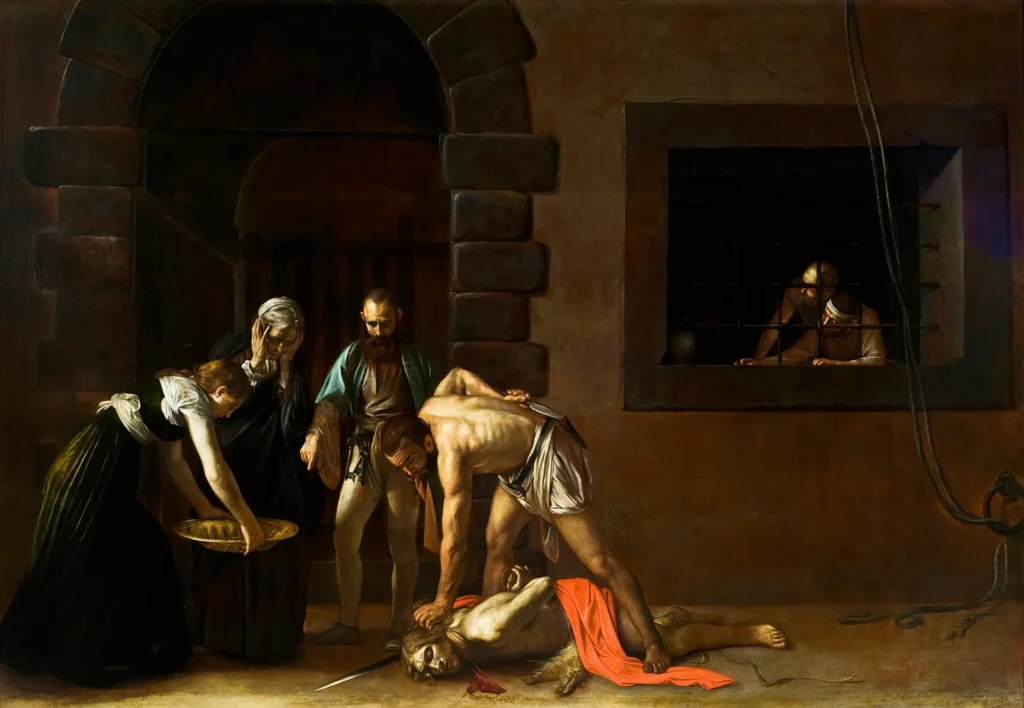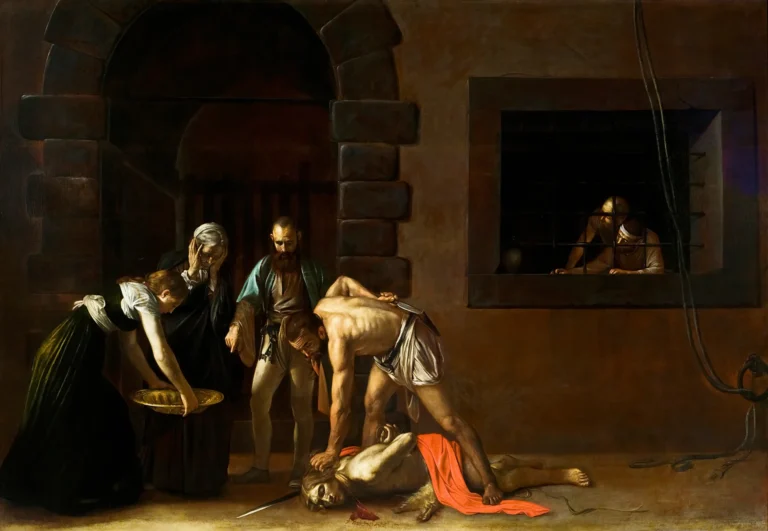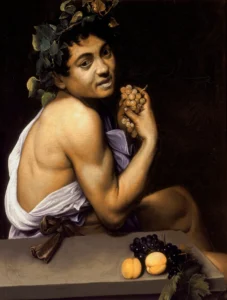The beheading of St. John the Baptist (1608)
Caravaggio's 'Beheading of St. John the Baptist' is a haunting portrayal of one of Christianity's most dramatic moments. Completed in 1608 for the Oratorio di San Giovanni in Valletta, Malta, this work demonstrates Caravaggio's mastery of chiaroscuro and his ability to capture raw human emotion. Measuring an impressive 361 x 520 cm, it is his only surviving signed work, with his signature uniquely displayed in St. John's blood as a testament to the artist's unconventional approach to storytelling.
Year 1608
About the Artwork
Did You Know
Liked what you see? Add it to your collection.
Enjoyed reading? Share it.
... continued
Location and Commission
The painting was created for the Oratorio di San Giovanni (now part of the St. John Museum) in the Co-Cathedral of St. John in Valletta, Malta. It was commissioned by the Knights of St. John, a military order that controlled Malta, to celebrate the feast day of their patron saint.
Size and Significance
This is Caravaggio's largest work, measuring 361 x 520 cm, and it is also his only surviving signed piece. The signature is uniquely written in the blood flowing from St. John's neck, with the letters "f. michelan..." which can be interpreted as either "fra (brother) michelangelo" or "fecit (made) michelangelo."
Composition and Style
The painting features a dramatic and somber scene set against the backdrop of a 16th-century prison building, possibly inspired by the architecture of the Grand Master’s Palace in Valletta. The composition is characterized by a classical balance and restraint, with figures posed in a monumental and frozen manner. The use of rich browns and the extensive ground showing through the paint add to the overall somber and tragic atmosphere.
Iconography and Symbolism
The scene depicts the moment just before the final severing of St. John's head. The executioner is shown reaching for a knife to complete the beheading, while Salome stands ready with a golden salver to receive the head. An old woman and a prison guard are among the witnesses. The golden salver serves as a symbol of St. John's imminent sainthood, and the broken slats of a gate in the background may allude to the crucifixion of Christ.
Artistic Techniques
Caravaggio employed his characteristic use of chiaroscuro, though with a more restrained color palette compared to some of his other works. The painting is notable for its technical mastery, including the impressive sense of drawing and the deliberate use of light and shadow to enhance the drama of the scene.
Historical Context
Caravaggio painted this work during his time in Malta, where he had fled after being exiled from Rome. He was hoping to receive a papal pardon and was eventually appointed as a Knight of Obedience of the Order of St. John in July 1608.










